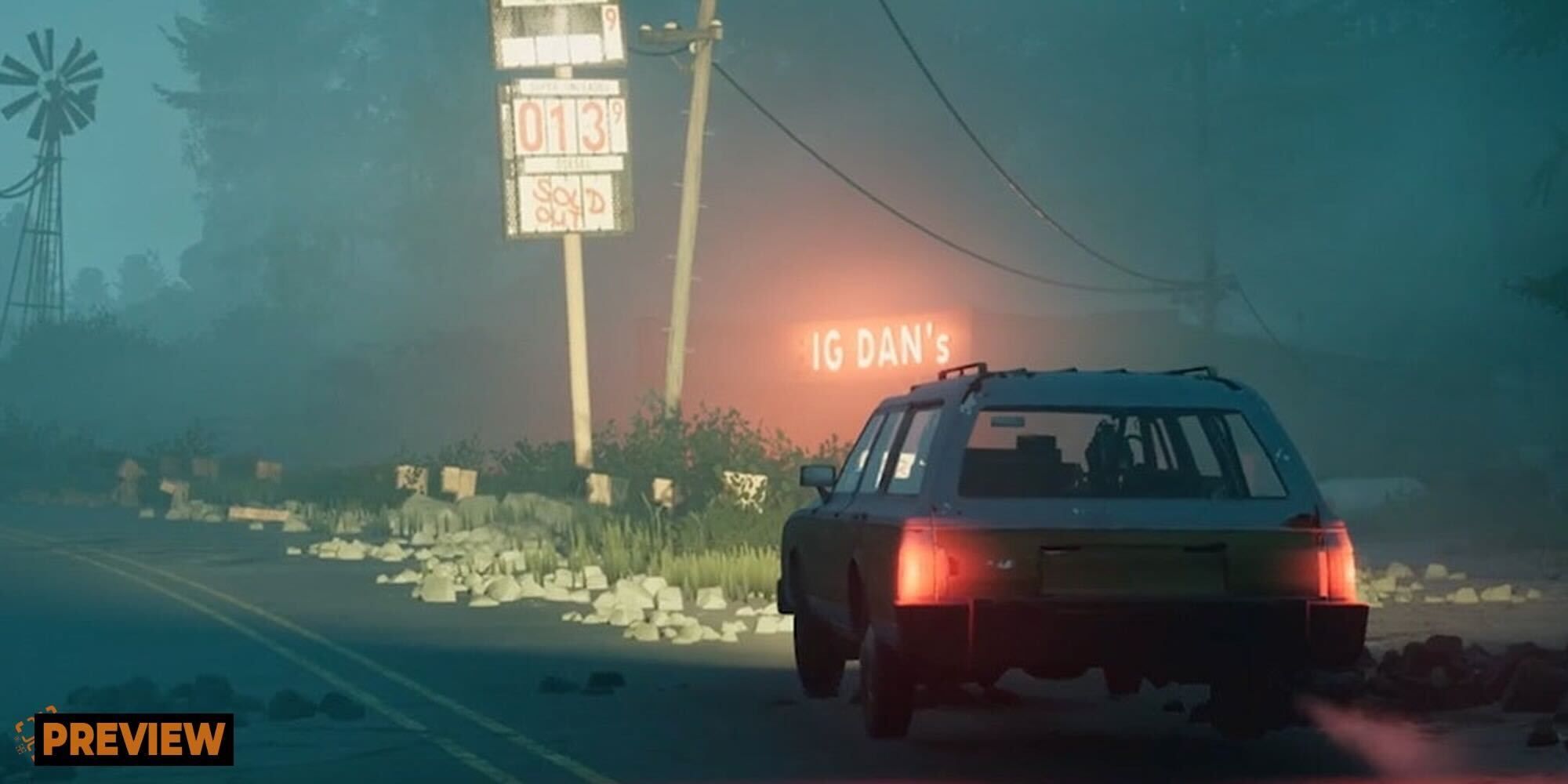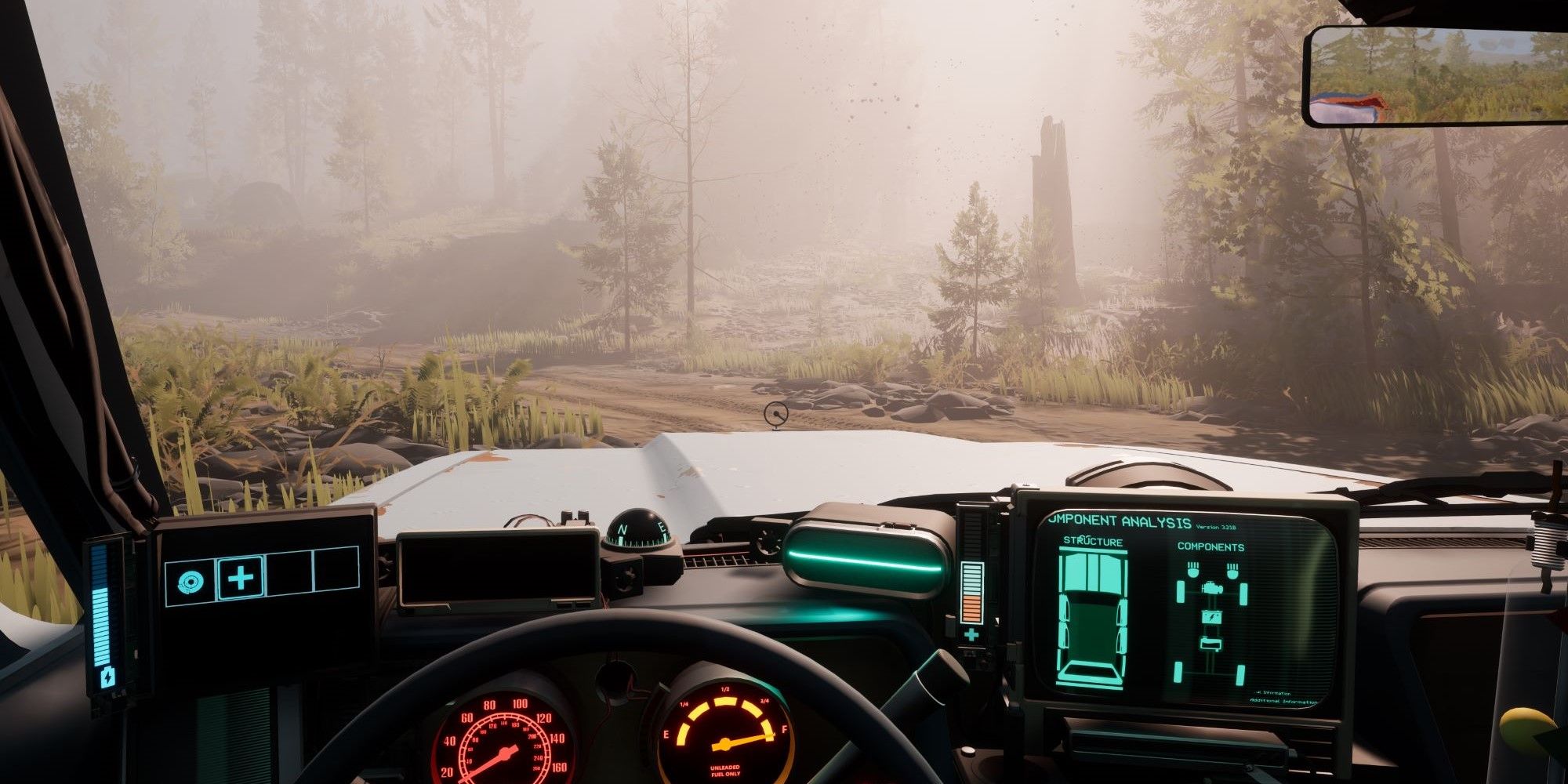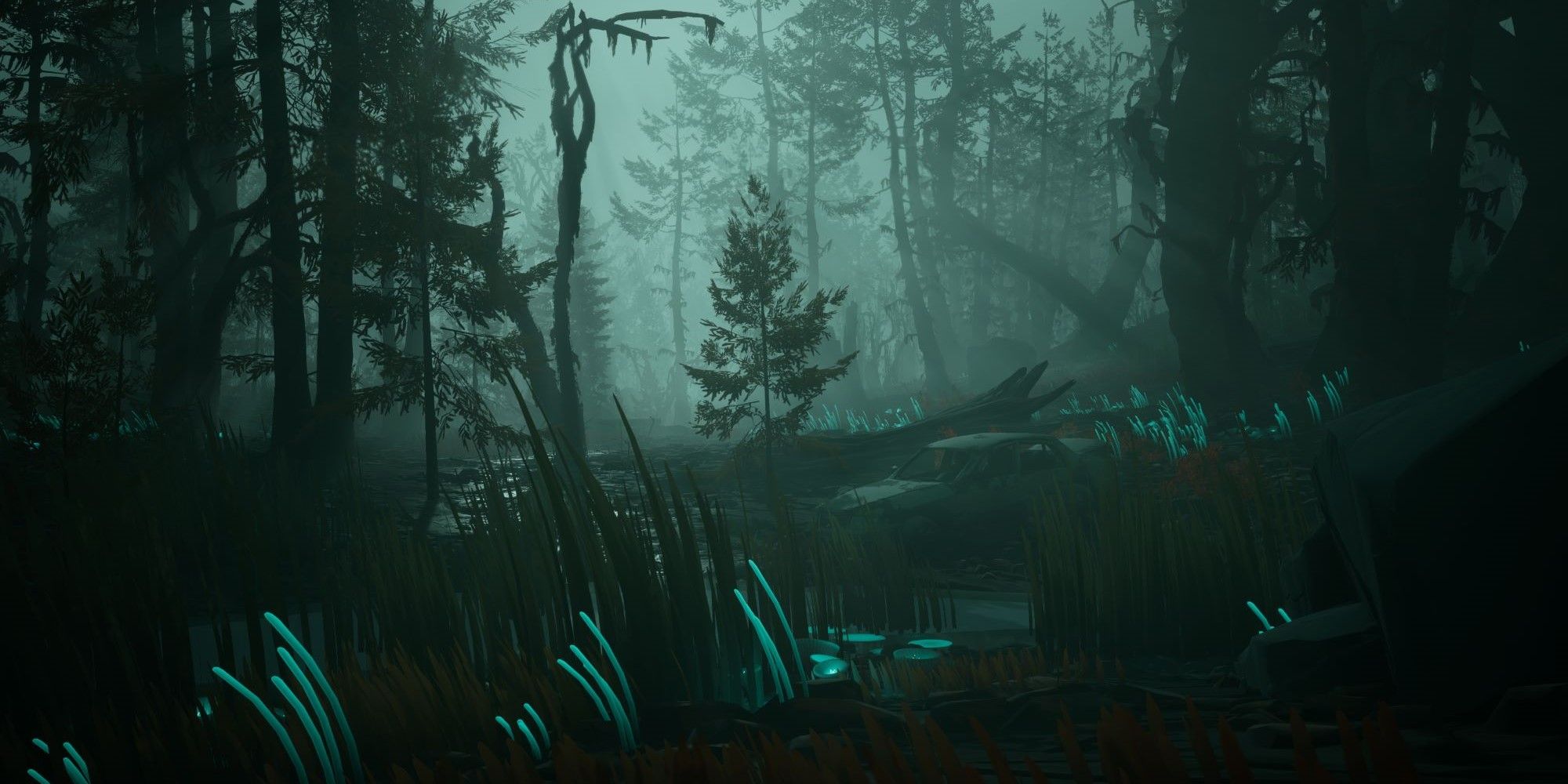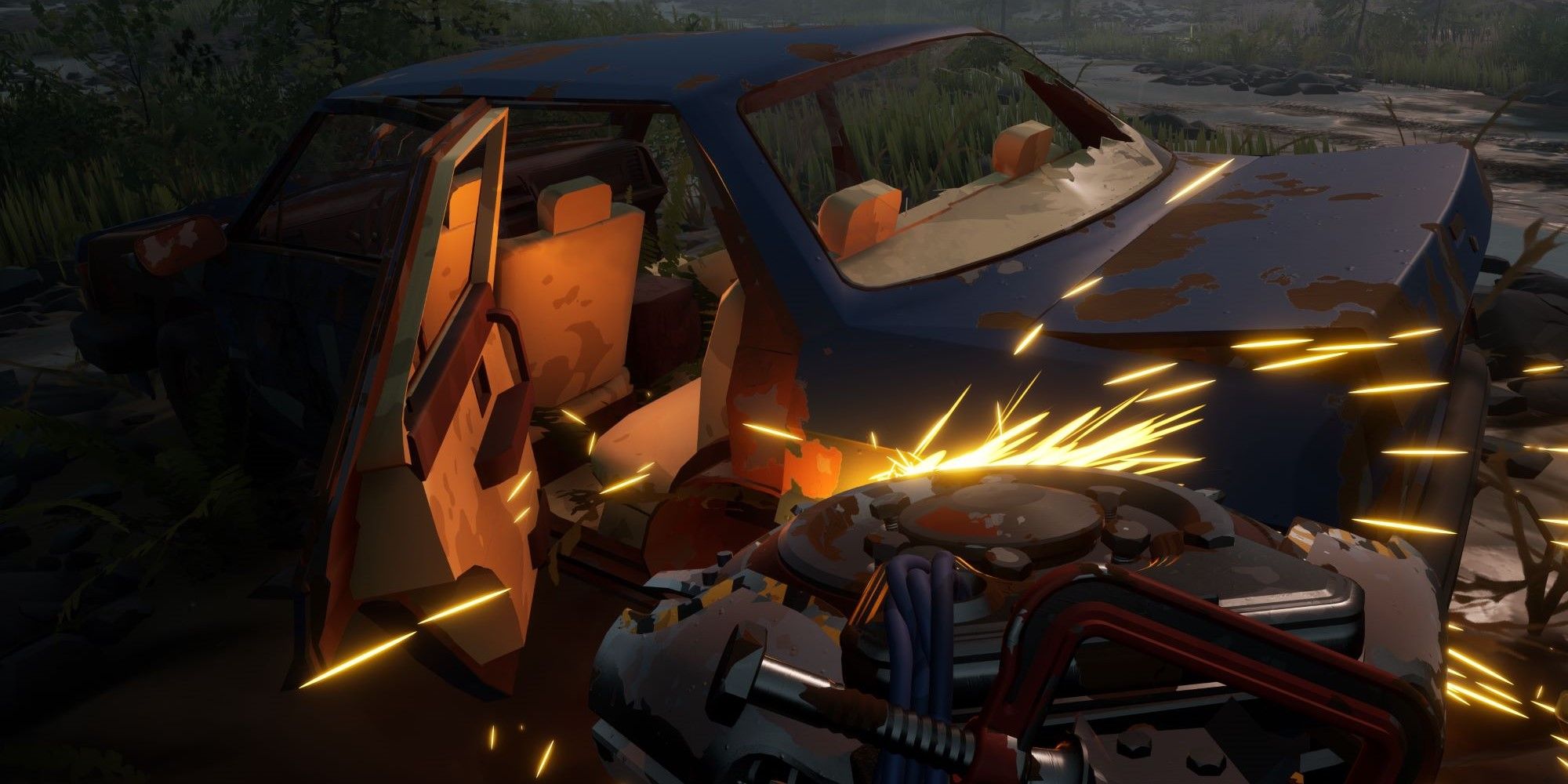When I was younger, my family drove a grey car. It was big and bulky. Before that we drove a black car. That was big too, and uglier. Before that, red, and smaller, because my sister had not been born yet. It was green before that, and smaller still, but though I had ridden in it, my only memory exists in photographs. These days, I don't drive, and my wife has a white car. I have only ever defined cars by colour and by size. I know that some are loud and some are quiet, some are expensive and some are cheap, some are new and some are old, but these distinctions mean little to me. Like trees in a forest, I can not tell one car from another. Previewing Pacific Drive, I felt the weight of this empty knowledge.
A group of journalists sat and watched the devs play one of the 'runs' in the game - I'll get to those shortly - and asked an array of questions. As a lot of journalists will tell you, these questions can sometimes be annoying. Frequently people show up having done no research, asking basic questions about things already revealed in various trailers and press releases, or asking for generic info we know will be provided anyway, such as release dates or platform availability. But for Pacific Drive, we all went in dark. All we had seen of the game was a short, atmospheric trailer of a car driving down a Pacific Northwestern road in eerie darkness, while an ominous sci-fi glow appeared from behind. One of these questions the team didn't really answer, and in not answering, I think they provided the clearest answer of all.
"Is this a story game for driving game players, or a story game that uses driving as a central mechanic?", Janet Garcia from Pen to Pixels asked, and the answer turned into a justification for keeping the driving in first person, a perspective many people inexperienced with drivers would struggle with, which expanded to accessibility features with cameras, driving assistance, and other features that aided this perspective. I think the reason the devs struggled to answer this clearly is because Pacific Drive is not about driving at all, no more than you might say The Last of Us is about jogging. It's about the car.
Everything the devs touch on comes back to affection for cars themselves. There's a lot of technical minutiae, from basic tasks like putting on the handbrake to more specific ones like repairing the taillight manually after a scrape. The reason for the handbrake being something the player must remember, rather than an automatic part of stopping the car as it is in every other game with a vehicle, is due to real life stories from the studio and the people they had talked to. They recall stories of a car (a Buick LeSabre '67, a name they drop with ease, as car aficionados do) rolling backwards down a hill and needing to be chased, overtaken, and stopped by hand. Driving is simply what you do with the car - not much of that feels too complicated or involved. It's the other parts, whether that's customising the interior with trinkets like bobbleheads, finding rocking mixtapes, repairing each small part by hand, that the game is really about.
More broadly, Pacific Drive describes itself as a 'driving survival' game. Mashing up genres that don't appear to go together is very in vogue right now, but anyone who has driven on a dark country road at night will at least see the logic in merging these two. It seems like 'survival' in the most basic sense, with players needing to gather petrol and other resources and manage their runs, rather than swarms of zombies coming to kill you while you tinker with the transmission.
These 'runs' are the core gameplay loop - you must explore deeper into the wilderness (two other biomes, not yet revealed, appear later in the game) to gather information on a rift that splits apart reality. You need to get close to the rift to investigate, but this will cause anomalies to occur, as well as extreme weather. In the preview, the car was blown away by a tornado and only stopped when it was flung against a felled tree, while amorphous creatures known as 'bunnies' latched onto the car like boulder-sized barnacles. Surviving these difficulties is the challenge of Pacific Drive, but as for what any of it means or why you're doing it, the devs weren't saying much.
Even the earlier question about it being a story-driven game came from an assumption, albeit an assumption most of us in attendance had made. It clearly wasn't a combat-based, high octane thriller, nor did it seem to be loaded with an array of traditional puzzles. Having a story inside it is all that seems left. For now though, little is being given away on what that story is. There will be other NPCs in the game, but we will only ever talk to them over the radio, and the conversations will be scripted rather than the multichoice responses other games provide. It feels similar to Firewatch in that way, where the slow burn experience is the point. We don't need to go anywhere. We just need to drive.
I'm not sure how I feel about Pacific Drive. It feels like an endearing, mechanically obsessed game for car lovers, but rather than just Car Maintenance Sim, it has this love wrapped around a creepy science-fiction rift in a dark forest, where unknown characters propel you along an unknown journey for unknown reasons. If you're the kind to go for a drive just for the rattle and hum, for the wet grip on the wheel, for the smell of leather and gasoline, for the crackle of the road under rubber, this might be the game for you. If you just want to get from A to B, I still can't really tell you what 'B' is. I’m not sure I ever could.




